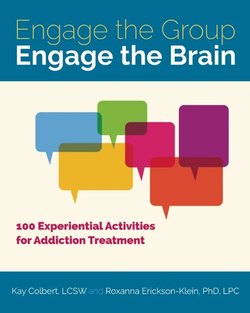Читать книгу Engage the Group, Engage the Brain - Kay Colbert - Страница 16
На сайте Литреса книга снята с продажи.
ОглавлениеFamily Tree
Location: Indoors
Time: 60 minutes
Materials: Pens or pencils
Blank paper
Family tree handouts
Samples based on the templates
Objectives
• To offer a multigenerational perspective on various qualities or characteristics found in families, including mental illness or substance use.
• To facilitate identification of risk factors.
• To encourage change.
Directions
1. Before the session begins, review the suggested templates and create samples to show. Alternatives are shown for a traditional family, a modified family, and a foster family.
2. Introduce participants to the concept of charting family trees.
3. Explain a simple family tree using a three- or four-generation format.
4. Engage participants in discussion of visible physical traits that can be identified through generations, such as eye color.
5. Identify patterns of behavior that are seen through generations, such as occupations, hobbies, or religious affiliation.
6. Discuss potential for behavioral patterns, including substance abuse, mental illness, or domestic violence to occur in multiple generations.
7. Facilitate group discussion identifying the value of raising awareness of patterns.
8. Direct participants to create their own multigenerational family tree and illustrate how various traits or qualities may be expressed over the generations.
9. Encourage participants to share feelings, discoveries, or self-understandings gained from the activity.
Observations
This activity was performed twice with groups of eight and ten members. Of those present, few had ever explored their own backgrounds in this manner. Qualities in addition to substance use that were discussed included musical ability, sickle cell disease, hypertension, family size, living to old age, and being accident prone. Participants responded with seriousness, and most stated that they expect to continue exploration into this aspect of their lives. One woman knew little of her biological family, had lived in foster homes, and charted a family of friends. Several of the participants required assistance in getting started with the chart development. Be prepared to provide comfort or grounding to those who start grieving loss of family or dysfunctional familial connections. It can be affirming to recognize that everyone does not come from a traditional family system.
Inspired by: The work of Monica McGoldrick, LCSW, PhD (h.c.), Director of the Multicultural Family Institute in Highland Park, New Jersey. This activity is superficial compared to her more serious works.
Family Tree HANDOUT
“Bear in mind that we have a wealth of ways of escaping that are normal.”
MILTON H. ERICKSON
